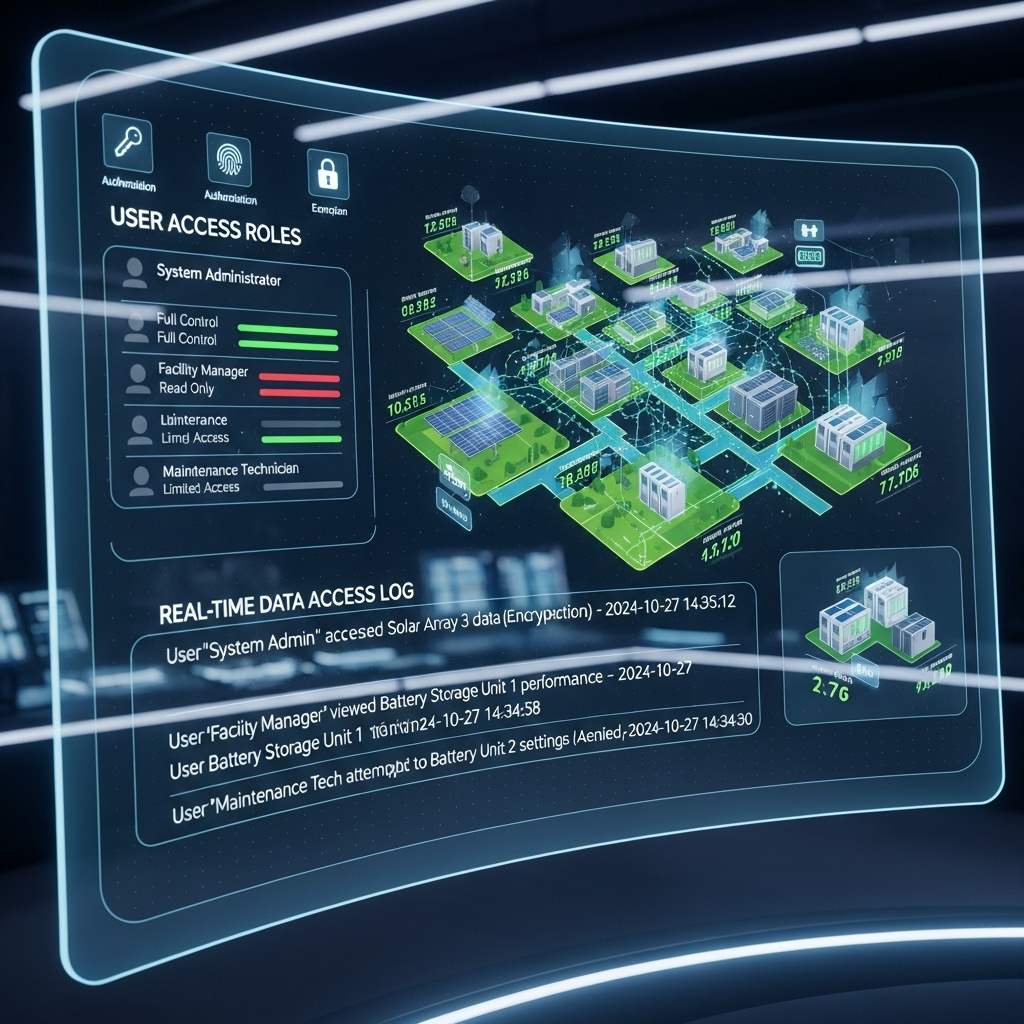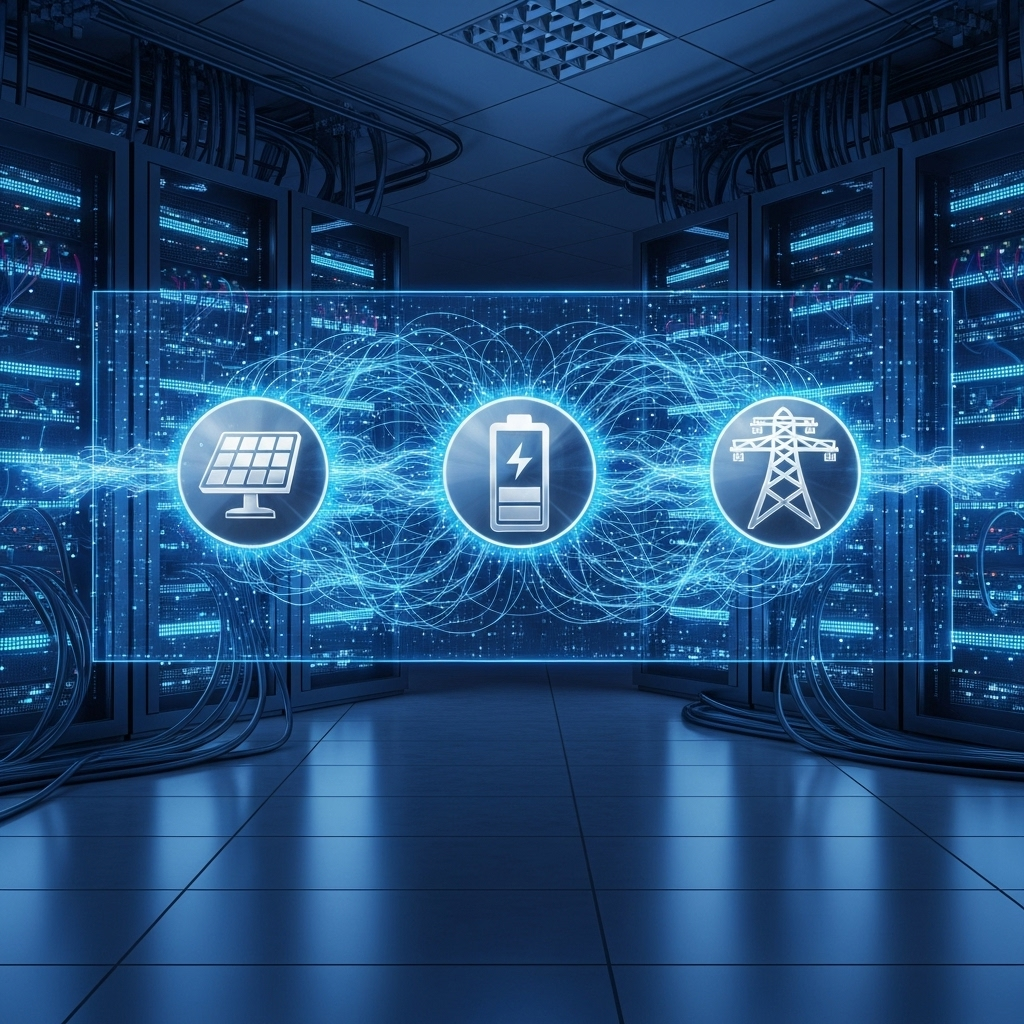The rapid adoption of Distributed Energy Resources (DERs), such as rooftop solar panels and home battery storage, marks a significant shift in our energy landscape. These technologies empower consumers and create a more resilient grid. They also generate an unprecedented amount of data. This raises a critical question: how do we manage this information to ensure both grid stability and the privacy of DER owners? One prominent solution being implemented globally is the creation of centralized energy data hubs.
Understanding the Data Challenge with DERs
To appreciate the solutions, we must first recognize the problem's scope. DERs are not just passive energy producers; they are active, data-rich participants in the electrical grid.
What Data Do DERs Generate?
DER systems produce a continuous stream of valuable information. This includes real-time energy production levels, household consumption patterns, battery charge and discharge cycles, device health diagnostics, and grid interaction data like voltage and frequency. This data is essential for grid operators to maintain balance and for service providers to offer innovative energy management solutions.
The Privacy and Cybersecurity Risks
The very data that makes DERs valuable also makes them a target. As the U.S. Department of Energy highlights, the expanding number of internet-connected DERs increases the grid's attack surface. Potential cyber threats include unauthorized access to personal consumption data, manipulation of energy markets, or even coordinated attacks that could destabilize local grid operations. Traditional security models are often insufficient for these distributed systems, creating a need for new, robust cybersecurity strategies to protect sensitive information.
The Centralized Data Hub Model Explained
In response to these challenges, many regions are turning to a centralized model for data management. This approach streamlines the complex flow of information from thousands or millions of individual DERs.
How Do Centralized Hubs Work?
A centralized data hub designates a single, trusted entity to act as a secure gatekeeper for all DER data within a specific region. This entity could be a Transmission System Operator (TSO), a utility, or an accredited third party. This central body collects, stores, and manages the data, providing access to eligible parties—like grid operators, energy retailers, or service aggregators—based on strict, non-discriminatory protocols. This model avoids a chaotic, point-to-point data distribution system. Several European countries, including Denmark and the United Kingdom, have already established such platforms to manage their growing DER fleets.
Potential Benefits for Data Access and Security
Centralizing data management offers significant advantages. It provides a single, authoritative source of information, which improves data quality and consistency. For utilities and grid operators, this means better visibility and more accurate forecasting. For consumers, it can simplify the process of authorizing trusted third-party services, such as demand response programs or virtual power plants, fostering innovation in the energy sector. A centralized platform can enforce uniform, high-level security standards, making it easier to monitor access and protect against breaches.
Evaluating the Pros and Cons for DER Privacy
While centralized hubs offer a structured approach, they also introduce a new set of considerations for DER privacy and data security.
Arguments for Centralized Hubs
Proponents argue that a centralized system can offer superior security by focusing resources on protecting a single, hardened platform rather than countless individual endpoints. It simplifies regulatory oversight and the enforcement of privacy rules. Consumers gain a clearer understanding of who is accessing their data and for what purpose, as all requests are funneled through one managed gateway. This structure can build consumer trust and confidence in sharing their energy data.
The Case Against: Centralization as a Single Point of Failure
Critics, however, point to a significant vulnerability: a centralized hub creates a high-value target for cyberattacks. A breach of the central repository could compromise the data of every DER owner on the network. This 'single point of failure' risk is a major concern. Furthermore, questions arise about data ownership and the potential for monopolistic control by the hub operator, which could stifle competition among service providers.
The Role of Performance Metrics in Data Management
The data being managed is not just about kilowatts; it's about the detailed performance of your assets. Understanding metrics like depth of discharge (DoD) and state of charge (SOC) is vital for optimizing your system's health and longevity. As detailed in this ultimate reference on solar storage performance, this performance data is highly sensitive. Any data hub, centralized or not, must employ robust mechanisms to anonymize and protect this granular information, ensuring it is used for grid stability without compromising individual privacy.
Exploring Alternatives: Decentralized Approaches
The concerns associated with centralization have fueled interest in alternative models that distribute data control and security.
The Concept of Decentralized Data Exchange
A decentralized model avoids a central gatekeeper. Instead, it could rely on a network of computers to secure and verify data flows and transactions, using technologies like blockchain or distributed ledgers. In this system, data ownership and control remain more directly with the consumer. They can grant access to specific data points to specific parties for specific purposes, creating a more granular and user-centric privacy framework.
Zero Trust Architecture: A New Security Paradigm
Regardless of the data management model, the underlying security philosophy is paramount. A 'Zero Trust Architecture' is gaining traction as the standard for modern, distributed systems. This framework operates on the principle of 'never trust, always verify.' As defined by NIST, it assumes that no user or device should be trusted by default, even if connected to a permissioned network. Every request for access must be authenticated and authorized, significantly reducing the risk of unauthorized lateral movement by attackers within a network.
Comparing Centralized vs. Decentralized Models
| Feature | Centralized Model | Decentralized Model |
|---|---|---|
| Security | Strong perimeter security, but a single point of failure. | More resilient to single-point attacks; security is distributed. |
| Data Control | Controlled by a central entity (e.g., TSO, utility). | Control largely remains with the data owner (consumer). |
| Efficiency | High efficiency in data processing and standardization. | Can have higher transactional overhead; less standardized. |
| Scalability | Can face bottlenecks as the number of DERs grows. | Generally more scalable and flexible. |
| Implementation | Conceptually simpler to regulate and implement. | More complex governance and interoperability challenges. |
The Path Forward for Secure DER Data
The debate between centralized and decentralized data management is not about finding a single winner. The optimal solution will likely be a hybrid approach that combines the efficiency and standardization of central hubs with the security and user empowerment of decentralized technologies. A key takeaway from the U.S. Department of Energy's work on energy networking is the critical need for secure, authenticated communication between all parties. Ultimately, building a secure, private, and efficient data infrastructure for DERs requires a multi-layered strategy. It demands strong regulatory frameworks, clear guidelines on data ownership, and the adoption of advanced cybersecurity principles like Zero Trust to protect the grid of the future and the consumers it serves.
Frequently Asked Questions
What are Distributed Energy Resources (DERs)?
Distributed Energy Resources (DERs) are small-scale power generation or storage technologies located on the consumer's side of the meter. Common examples include rooftop solar panels, home batteries, and electric vehicle chargers.
Why is data privacy a concern for solar panel owners?
Your energy data reveals detailed patterns about your daily life, such as when you are home or away and what appliances you use. Protecting this data is crucial to prevent misuse, whether for unauthorized commercial purposes or more malicious activities.
Who can access my energy data in a centralized hub model?
Access is typically restricted to authorized entities for specific purposes. This may include your utility for billing, the grid operator for maintaining stability, and third-party service providers that you have explicitly given consent to, such as for a demand response program.
What is a 'zero trust' security model?
Zero trust is a security framework based on the principle of 'never trust, always verify.' It requires strict identity verification for every user and device trying to access resources on a network, regardless of their location, effectively eliminating the idea of a trusted internal network.





Leave a comment
All comments are moderated before being published.
This site is protected by hCaptcha and the hCaptcha Privacy Policy and Terms of Service apply.